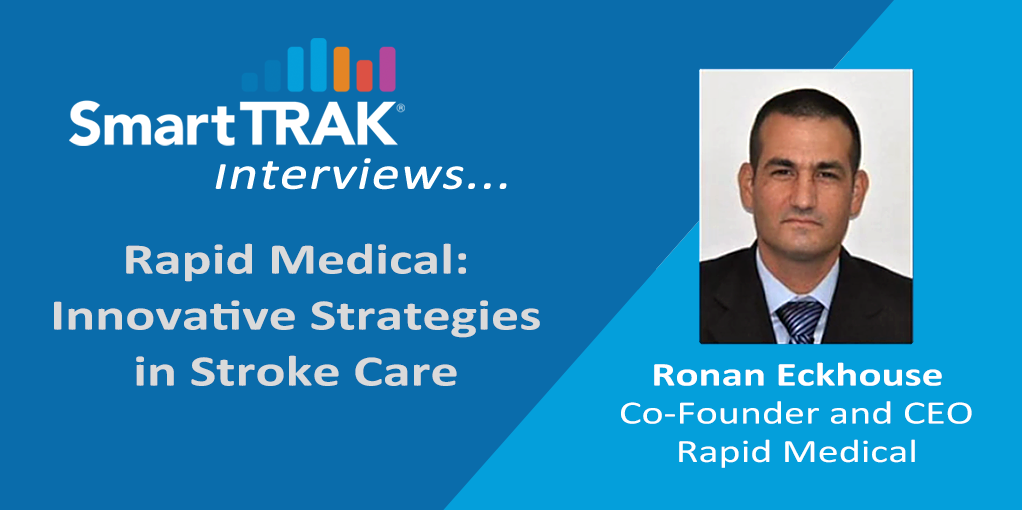 SmartTRAK's Senior Regenerative Medicine Analyst, Freddy Buntoum, attended TOBI 2019 this summer. Here's a look at some of the key trends and takeaways in Orthobiologics from the 10th PRP & Regenerative Medicine Symposium, hosted by TOBI, that are still prevalent today.
SmartTRAK's Senior Regenerative Medicine Analyst, Freddy Buntoum, attended TOBI 2019 this summer. Here's a look at some of the key trends and takeaways in Orthobiologics from the 10th PRP & Regenerative Medicine Symposium, hosted by TOBI, that are still prevalent today.
Amid these trends, the market continues to grow. The total combined 2018 revenue for PRP, BMAC and Adipose Tissue products for use in Orthopedic/Spine/Sports Medicine was approximately $176.4MM and is projected to grow to $193.4MM by 2023E according to SmartTRAK’s Cell Processing Market Overview. SmartTRAK highlights the main trends and issues that continue to drive or hinder growth in this market and reports key discussions and presentations from TOBI 2019.
Trend 1: Growing Evidence But Inconsistent Results
Over the last few years, researchers have been conducting a growing number of clinical trials evaluating PRP, BMAC, adipose Tissue and other Regenerative Medicine for use in orthopedics, spine and sports medicine in an effort to bring credibility to the effectiveness and safety of these therapeutic options. But regardless of how many years it has been used in orthopedics, it was clear from research presented at TOBI 2019, as well as from discussions with physicians and manufacturers on the Symposium floor, that there is still controversy surrounding the effectiveness of these therapies to treat various conditions
In a presentation at TOBI 2019, Dr. M. Fredericson (Stanford University) reiterated that not all PRP is the same and he illustrated this by highlighting studies with inconsistent results. In one study, treating Tendon Stem Cells (TSC) with PRP-releasate induced TSC differentiation, suggesting that PRP has the potential to augment repair of injured tendons. However, another study found that PRP did not induce TSC differentiation. And, another recently published study in the Journal of Sports Medicine showed results indicating that PRP injections with interstitial supraspinatus tears did not improve tendon healing or clinical scores vs saline injections and were associated with more adverse events. And again, at TOBI 2019, Prof. J. Fitzpatrick (University of Melbourne AUS) presented results from an 80-patient trial wherein a single-injection of leucocyte-rich PRP showed greater improvement in both pain and function vs single cortisone injection in patients with chronic gluteal tendinopathy.
With regards to BMAC and Adipose Tissue therapies, there is also inconsistency in clinical trial results. For example, Dr. D. Karli (IWEUS Health) presented one study showing that use of BMAC for knee osteoarthritis (OA) demonstrated significant positive results for pain and function, while another study showed that BMAC was no better than saline for patients with knee OA. Then, researchers presented a study showing positive results for BMAC in soft tissue disorders but then another study showed it did not.
Dr. K. Mautner (Emory Sports Med Center) presented a 76-patient study evaluating functional outcomes following micro-fragmented adipose tissue (MFAT) vs Bone Marrow Aspirate Concentrate (BMAC) injection for knee OA. The results showed significant improvement in pain and function with MFAT or BMAC at one year, but without a significant difference between treatment modalities.
Presentations on studies showing positive or negative results continued for the duration of the Symposium.
Trend 2: Market Growth Continues Amid Lack of Standardization
One of the most concerning trends noted at TOBI 2019 is that there are still no standards to determine the optimal compositions, techniques, dosage, volume, concentration, cell count, etc. for any of these new therapeutic options. This, regardless of a market consensus that projects revenues and number of procedures to grow at healthy five-year CAGRs of 10.7% and 6.3% respectively, according to SmartTRAK’s Cell Processing Market Overview reports.
SmartTRAK offers several plausible reasons (not exhaustive) why the field still has not established standards, developed an organized approach to clinical trial design or established a common nomenclature:
- The revenue that these new therapies generate for large and mid-size suppliers is not enough to warrant the time and financial investments needed for large scale clinical trials. And, small players simply cannot afford to take on such costly projects.
- There is enduring discord among scientists that has split them into opposing groups. One group is intent on proving the benefits, safety and efficacy of PRP, BMAC and/or Adipose Tissue therapies and the other is intent on disproving them.
- It is perhaps already understood that these therapies are just temporary “pain management band-aids,” knowing that a more permanent regenerative treatment could be just around the corner and this is really where companies and science are investing time and funding.
- Surgeons, the main target audience for these products, may not want technologies that delay or even prevent surgery on a patient, because performing surgeries is what they are vested into and make their living on.
- There remains a gap in understanding the cellular mechanism and disease-modifying effects of these therapies and why they seem to work for some patients but not for others and/or work for some indications but not consistently. It may possibly be too soon in the evolution curve of these therapies.
While some clinical results show promise for PRP, BMAC and Adipose tissue therapies as legitimate treatment options, to gain full market acceptance and obtain favorable reimbursement for these products, physicians need to come to consensus on standardization and work together with industry to invest time and money into robust clinical studies to collect real-world evidence and build patient registries.
Trend 3: Regulatory Scrutiny Intensifies
The topic of regulatory oversight was again a dominant subject at TOBI 2019, and to no one’s surprise this was discussed at length. Given the increased use of stem cells and related therapies, not just in orthopedic, spine and sports medicine, there are ever growing concerns about the ethical practices of some clinics, patient safety and the future for achieving reimbursement.
While some good clinical results are encouraging for these therapies, the volume of what is considered good, positive clinical data is not yet robust enough to establish a strong body of evidence. Additional data are needed to demonstrate that these treatments are effective and to potentially support some of the outlandish claims made by the plethora of private clinics opening almost daily.
Today, the public at large is being exposed to a tremendous amount of advertising from practices that claim to be providing options to patients who have exhausted standard treatments. However, a growing number of “boutique clinics” are marketing their “all healing treatments” more like trendy spa packages, complete with celebrity endorsements and infomercial-like promotion. Critics, and more recently the FDA, are arguing that these practices are exploiting desperate patients as companies and physicians profit from the sale of treatments that are not fully proven and are still categorized as experimental.
At TOBI 2019, while walking the floor of the Symposium, SmartTRAK heard discreet conversations on this subject, including some in favor of doctors and practices’ ability to make “easy money.” Today, stem cell therapy-type treatments are mainly an “out-of-pocket” business with patients typically paying anywhere from a low of $850 to a high of more than $2,600 for PRP and in excess of $4,000 for fat and BMAC injections. Consequently, it is easy to conceive why some physicians may be tempted to profit while this market is not fully regulated and free of the complexity of the healthcare reimbursement process.
On the flip side of the conversations, some TOBI 2019 attendees were praising the Federal authorities for being more active in cracking down on doctors who make unproven claims and/or sell unapproved stem cell products. Although, with over 1,000 stem cell clinics in operation some say the FDA has its work cut out, but the Agency is taking the right approach by first targeting “rogue” clinics that are injecting into the eye, brain or vital organs and therefore pose the biggest threat to patients and to the integrity of the medical field as a whole.
One challenge everyone agreed on is that growing patient demand for these type of treatments is increasing pressure on physicians to use stem cell treatments, as patients will seek treatment elsewhere if their doctor does not “comply” to their request.
So, What are Physicians and Industry to Do?
What became very obvious during TOBI 2019 is that one of the factors that what will be critically important for propelling stem cell and related therapies forward in terms of establishing credibility and legitimacy, will be for everyone to abide and maintain rigorous adherence to regulations for production, labeling, marketing and commercialization of PRP, BMAC, Adipose and Amniotic products. In fact, at TOBI 2019, Dr. L. Fortier brought this to the forefront when she talked about the Liveyon Regen tragedy of 2016 when it was found that batches of the ReGen Series product manufactured by Genetech were contaminated with E. coli and patients had been injected with them. Dr. Fortier provided a sobering reminder that it is the responsibility of everyone to maintain the safety of patients, as well as for the physician to ensure he/she asks the correct questions when evaluating a new product to become a part of his/her armamentarium.
Recently, Active FDA Commissioner, Ed Sharpless, MD sent a very clear message to all stakeholders by publicly stating that “the FDA will continue to take action – such as issuing warning letters or initiating court cases against clinics that abuse the trust of patients and endanger their health with inadequate manufacturing conditions or by manufacturing or promoting products in ways that make them drugs under the law…” (June 2019).
In closing remarks, TOBI’s Founder and Chairman, Dr. Steven Sampson stressed that in a turbulent environment, affected by a lot of negative press, conflicting study results, lack of reimbursement and current regulatory guidelines that have loopholes, it is critical to have consistency and robust data proving efficacy and safety. Also, to propel new and sometimes radical Orthobiologic solutions, a strong collaboration between physicians, regulatory bodies and industry will be crucial to maintain patient safety and compliance.
Still, the future appears to remain bright for Cell Processing and Regenerative Medicine. After listening to presentations and taking with attendees at TOBI 2019, it was clear that although there remains a lot of work to be done, stakeholders are most certainly vested in the future development and growth of PRP, BMAC, Adipose and Amniotic therapies.
If you would like more info on how to subscribe to SmartTRAK, the leading source of competitive intelligence used by the top ten global orthopedic & wound care companies, or you would like a demo of what SmartTRAK has to offer and how we can help increase proficiency, improve productivity and reduce costs for your company, just click the button below.





